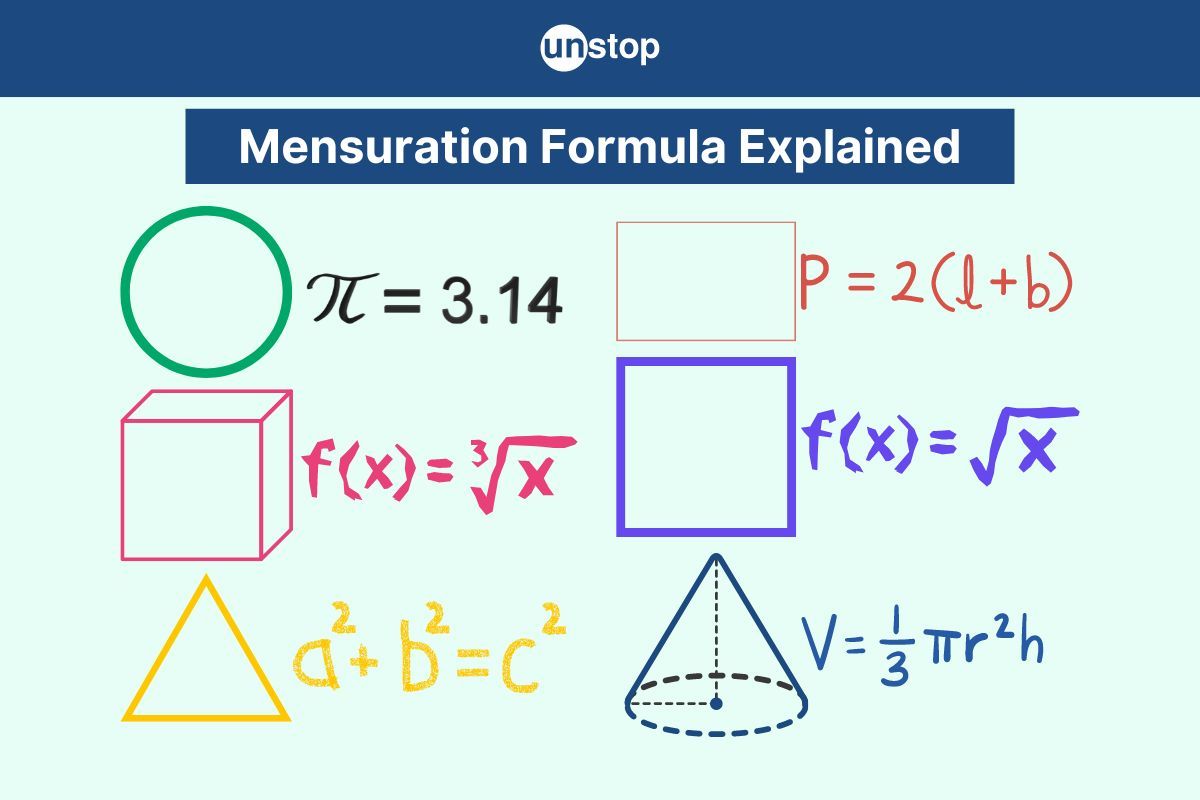- Step 1: The Groundwork
- Step 2: The Three Sections
- Step 3: Practice Makes Improvement
- The Secret Ingredient
- Understanding Basics Of Number Series
- Types Of Number Series Reasoning Questions
- Addition & Multiplication In Number Series
- Square & Cube-Based Number Series Patterns
- Missing Terms & Arranging Sequences
- Tricks & Tips For Solving Number Series
- Selected Number Series Questions With Solutions
- Frequently Asked Questions (FAQs)
- Must Know Terminologies in Blood Relation Questions
- Basic Approaches to Solve Blood Relation Questions
- Types Of Blood Relation Questions
- Tips For Solving Blood Relation Questions
- Multiple Choice Questions (MCQs) with Detailed Explanation
- Conclusion
- Frequently Asked Questions (FAQs)
- Letter Series In Logical Reasoning
- Types Of Letter Series Patterns
- Tips For Solving Letter Series Reasoning
- Best Practice Question Samples With Answers
- Conclusion
- Frequently Asked Questions (FAQs)
- Basics of Problems On Age-Related Questions
- Formula to Solve Problems on Ages-Related Questions
- Types of Age-Related Questions & Examples
- Tips & Tricks for Solving Ages Problems
- Best MCQs on Problems on ages with solved answers
- Conclusion
- Frequently Asked Questions (FAQs)
- Definition of Calendar
- Understanding Days of the Week
- What is a Leap Year?
- Concept of Odd Days in a Century
- Tips For Solving Calendar Reasoning Questions
- Best Calendar Reasoning Questions with Answers (MCQs)
- Frequently Asked Questions (FAQs)
- Basic Concepts of Clock
- Structure of a Clock
- Angle Equilavalence in Clock
- Tips For Solving Clock Questions
- Selected Clock Questions & Answers (MCQs)
- Conclusion
- Frequently Asked Questions (FAQs)
- Understanding The Concept Of Direction Sense
- Tips For Effective Problem-Solving In Direction Sense
- Practical Test Practice Questions And Answers
- Conclusion
- Frequently Asked Questions (FAQs)
- Importance Of Dice Reasoning
- Dice Numbers In Dice Reasoning
- Classification Of Dice
- Constructed Vs Deconstructed Dice
- Tricks & Tips For Solving Dice Problems
- Practice MCQs With Detailed Answers
- Conclusion
- Frequently Asked Questions (FAQs)
- Alphanumeric Series Defined
- Alphanumeric Series In Reasoning Tests
- Tips & Strategies For Solving Alphanumeric Series
- Practice Sample Questions With Detailed Answers
- Conclusion
- Frequently Asked Questions (FAQs)
- Concept Of Mirror Image Reasoning Explained
- Important Terms In Mirror Image Reasoning
- Types Of Mirror Images
- Identifying Correct Mirror Image
- Finding Clock's Mirror Image
- Tips To Solve Mirror Images
- Selected Practice Questions With Answers
- Conclusion
- Frequently Asked Questions (FAQs)
- Concept & Overview Of Input-Output
- Input-Output In Competitive Exams
- Types Of Input-Output Problems
- Strategies, Tips & Tricks For Solving Reasoning Questions
- Selected Practice Questions With Answers
- Conclusion
- Frequently Asked Questions (FAQs)
- Importance Of Finding The Odd One Out
- Tricks And Tips
- How to Find The Odd One Out?
- Solved MCQs with Detailed Explanation
- Conclusion
- Frequently Asked Questions (FAQs)
- Understanding Key Concepts
- Exploring Different Ranking Types
- Formula And Application Of Order And Ranking
- Tips For Solving Order & Ranking
- Selected Practice Questions And Answers
- Conclusion
- Frequently Asked Questions (FAQs)
- Importance Of Pipes & Cistern Aptitude
- Key Terminologies used in Pipes and Cisterns
- Pipes and Cisterns Formula with Examples
- Pipes and Cisterns Shortcut Tricks
- Tips For Solving Pipes & Cistern Problems
- Selected Questions & Answers For Practice (MCQs)
- Conclusion
- Frequently Asked Questions (FAQs)
- Key Concept in Boats and Streams
- Formulas Of Boats & Streams
- Distance & Time Formula
- Tips For Solving Boats & Streams Questions
- Selected Practice Questions With Answers (MCQs)
- Conclusion
- Frequently Asked Questions (FAQs)
- Concept of Mixture and Alligation
- Types Of Alligation Questions
- Formula for Solving Mixture & Alligation
- Tips For Solving Mixture And Alligation
- Selected Questions With Answers For Practice
- Conclusion
- Frequently Asked Questions (FAQs)
- Concepts and Definitions Related to Time and Work
- Important Time And Work Formulas
- Tricks and Tips to Solve Time & Work Questions
- Time And Work MCQs with Detailed Solution
- Conclusion
- Frequently Asked Questions (FAQs)
- What is Harmonic Progression(HP)?
- Formula to find the nth Term in Harmonic Progression
- Formula to find the Sum of the nth Term in HP
- What is Harmonic Mean?
- Harmonic Progression Solved Best MCQs
- Conclusion
- Frequently Asked Questions (FAQs)
- What is Mensuration in Maths?
- What are 2D figures in Mensuration?
- What are 3D figures in Mensuartion?
- Basic Terminologies In Mensuration
- Basic 2D Formulas in Mensuration
- Basic 3D Formulas in Mensuration
- 2D vs 3D in Mensuration
- Solved Questions With Solutions (MCQs)
- Conclusion
- Frequently Asked Questions (FAQs)
- Relationship Between Time, Speed And Distance
- Conversion Units Time, Speed And Distance
- Average & Relative Speed: Two Trains Moving in the same or opposite direction
- Solved MCQs on Time, Speed And Distance
- Conclusion
- Frequently Asked Questions (FAQs)
- What is Simplification in Maths?
- BODMAS Rule in Simplification Explained
- Simplification & Approximation Relation
- Key Terms in Simplification
- Examples Of Simplification Techniques
- Simplification Questions With Solved Answers (MCQs)
- Conclusion
- Frequently Asked Questions (FAQs)
- Height And Distance Important Terms
- Right Angled Triangle In Trigonometry
- Trigonometric Ratios
- Solved Examples For Better Understanding
- Height And Distance Applications In Trigonometry
- Height And Distance Practice Questions & Answers
- Conclusion
- Frequently Asked Questions (FAQs)
- Defining Interest Types
- Simple Interest Vs. Compound Interest
- Selected Solved Questions & Answers
- Conclusion
- Frequently Asked Questions (FAQs)
- Basic Concepts Of Profit And Loss
- Determining Selling Price
- Calculating Discounts
- Formulas For Calculating Profit And Loss
- Examples Of Profit And Loss
- Profit & Loss Questions With Detailed Solution
- Conclusion
- Frequently Asked Questions (FAQs)
- Defining Angle Of Elevation
- Key Terms Used In Angle Of Elevation
- Angle of Elevation Formula with Example
- Angle of Elevation vs. Angle of Depression
- Angle of Elevation MCQs with Answers
- Conclusion
- Frequently Asked Questions (FAQs)
- Defining HCF And LCM
- Calculation Methods Of HCF And LCM
- HCF By Prime Factorization Method
- LCM By Prime Factorization Method
- Difference Between HCF And LCM
- HCF & LCM Practice Questions With Answers
- Conclusion
- Frequently Asked Questions (FAQs)
- What is fraction and decimal?
- Understanding Decimal Fraction
- Place Value in Decimal Fraction
- Mathematical Operations with Decimal Fraction
- Practice with Solved Examples
- Summary
- Frequently Asked Questions
- All About Decimals
- All About Fractions
- How to Convert a Decimal into Fraction
- Simple vs Recurring Decimals
- Converting Recurring Decimals to Fractions
- Conversion Charts
- Practice Questions (With Solutions)
- Closing Thoughts
- Frequently Asked Questions
- What is Arithmetic Mean?
- Arithmetic Mean Formula- Ungroup Data & Group Data
- Merits of Arithmetic Mean
- Demerits of Arithmetic Mean
- Alternatives to Arithmetic Mean
- What is the Weighted Arithmetic Mean?
- Arithmetic vs. Geometric Mean
- Arithmetic Mean Application in Statistical Analysis
- Arithmetic Mean Practice Questions with Explanation
- Frequently Asked Questions
- What is Geometric Progression?
- Key Properties of Geometric Progression
- General Form Of Geometric Progression
- General Term or the Nth Term of Geometric Progression
- The sum of nth Terms of GP
- Types Of Geometric Progression
- Solved Questions and Answers of GP
- Conclusion
- Frequently Asked Questions (FAQs)
- Average in Maths
- Average Formula in Maths
- Differentiating Types of Average
- How to Calculate Average of Negative Numbers?
- Practical Applications of Averages
- Average Questions For Practice
- Frequently Asked Questions
- What is Simple Interest in Maths?
- Simple Interest Formula Explained
- Simple Interest Formula for Years, Months & Days
- Simple Interest Examples & Practice Questions
- Conclusion
- Frequently Asked Questions (FAQs)
- Defining Mathematical Ratios
- Understanding Proportions Fundamentals
- Differentiating Ratios from Proportions
- Ratio and Proportion Formulas
- Properties of Ratio and Proportion
- How to Solve Ratio and Proportion Problems
- Ratio and Proportion Problems (With Solutions)
- Summary
- Frequently Asked Questions
- What is Number in Maths?
- Types of Numbers With Example
- Real vs Complex Numbers Explored
- Basic Operations on Numbers
- Practice Questions (With Solutions)
- Frequently Asked Questions
- What is Arithmetic Progression (AP) in Maths?
- Important Terminologies in Arithmetic Progression
- Basic Terms in Arithmetic Progression
- General Form Of Arithmetic Progression Series
- Types Of Arithmetic Progression
- Solved Questions With Explanation (MCQs)
- Conclusion
- Frequently Asked Questions (FAQs)
- Understanding Basic Concept
- Importance Of Train Problems In Aptitude
- Tips To Solve Train Problems
- Selected Practice Questions & Answers
- Conclusion
- Frequently Asked Questions (FAQs)
- Definition Of Mode
- Calculating Mode For Ungrouped Data
- Calculating Mode For Grouped Data
- Bimodal, Trimodal & Multimodal Distributions
- Comparing Mean, Median & Mode
- Selected Practice Questions With Answers
- Conclusion
- Frequently Asked Questions (FAQs)
- Important Concept In Races And Games
- Calculating Time, Speed & Distance
- Importance Of Races And Games Problems
- Sample Practice Questions With Answers
- Conclusion
- Frequently Asked Questions (FAQs)
- Types Of Partnership
- Formula For Partnership Questions
- Tips To Solve Partnership Aptitude Questions
- Selected Partnership Questions (Practice MCQs)
- Conclusion
- Frequently Asked Questions (FAQs)
Mensuration in Maths: 2D & 3D Shapes, Formulas, Area, Volume (MCQs)

Curious about what mensuration is and its significance? Get ready to enhance your knowledge and grasp the fundamental formulas and principles that govern shapes, sizes, and measurements in various geometrical contexts.
What is Mensuration in Maths?
In mathematics, mensuration refers to the branch that measures geometric figures and shapes. It involves calculating various properties of 2D and 3D shapes, such as:
- Area: The measure of the space enclosed within a shape.
- Perimeter: The total length around a 2D shape.
- Volume: The amount of space occupied by a 3D shape.
- Surface Area: The total area of all the surfaces of a 3D shape.
Mensuration uses formulas and techniques to determine these measurements, which are essential for solving problems related to geometry and practical applications like construction, design, and spatial analysis.

What are 2D figures in Mensuration?
In mensuration, 2D figures (two-dimensional shapes) refer to flat geometric figures that have only two dimensions: length and width (or height). These shapes do not have thickness or depth, and they lie entirely in a single plane. Studying 2D shapes in mensuration involves calculating various properties such as area, perimeter, and sometimes the length of diagonals.
Mensuration deals with finding the area (the amount of space inside the shape) and the perimeter (the total length around the shape) of 2D shapes. Examples of 2D shapes in mensuration include square, rectangle, triangle, circle, parallelogram, and trapezium.
What are 3D figures in Mensuartion?
In mensuration, 3D figures (three-dimensional shapes) refer to solid geometric figures that have three dimensions: length, width, and height (or depth). Unlike 2D shapes, which are flat and only have area and perimeter, 3D shapes have volume and surface area.
Examples of 3D shapes include cubes, cuboids (Rectangular Prisms), spheres, cylinders, cones, and pyramids. Measuring 3D shapes involves calculating their volume (the amount of space they occupy) and surface area (the total area of all their surfaces).
Basic Terminologies In Mensuration
Let us study the essential terminologies in mensuration:
Terminology |
Definition |
|---|---|
| Area | The amount of space inside a shape or figure |
| Perimeter | The total distance around the outside of a shape |
| Volume | The amount of space occupied by a 3D object |
| Circumference | The distance around the edge of a circle |
| Surface Area | The total area of all the faces of a 3D object |
| Diagonal | A line segment connecting two non-adjacent vertices of a polygon |
| Height | The vertical measurement of an object or figure |
| Base | The bottom side of a shape or figure |
| Radius | The distance from the centre to the edge of a circle |
| Diameter | The distance across a circle through its centre |
Basic 2D Formulas in Mensuration
For 2D shapes in mensuration, the area formulas are essential for calculating the space enclosed within the shape. Here are some common area formulas to find the area of 2D shapes:
Shape |
Formula |
|---|---|
| Square | Area = side length×side length |
| Rectangle | Area = length×width |
| Triangle | Area = 1/2×base×height |
| Circle | Area = πr2 |
Basic 3D Formulas in Mensuration
Calculating the volume of 3D objects involves different formulas based on the shape. Here are some of the important formulas to find the volume of 3D shapes in mensuration:
Shape |
Formula |
|---|---|
| Cube | V = s3 |
| Rectangular Prism | V = l×w×h |
| Sphere | V = (4/3)πr3 |
| Cylinder | V = πr2h |
| Cone | V = (1/3)πr2h |
| Pyramid | V = (1/3)Bh |
2D vs 3D in Mensuration
Let us study some of the key features and the differences between 2D & 3D:
| Feature | 2D Shapes | 3D Shapes |
|---|---|---|
| Dimensions | Two dimensions: length and width | Three dimensions: length, width, and height |
| Plane | Flat, existing in a single-plane | Solid, extending through space |
| Examples | Square, Rectangle, Triangle, Circle | Cube, Cuboid, Sphere, Cylinder, Cone, Pyramid |
| Area Calculation | Yes, calculates the space within the shape | Not applicable |
| Perimeter Calculation | Yes, measures the boundary length | Not applicable |
| Volume Calculation | Not applicable | Yes, measures the space occupied by the shape |
| Surface Area Calculation | Not applicable | Yes, measures the total area of all surfaces |
| Representation | Drawn or displayed on a flat surface | Requires 3D models or visualizations |
Click here to consistently enhance and upskill your quantitative aptitude and reasoning prowess for placement interviews and competitive exams.
A comparative table of 2D and 3D figures, including their definitions and formulas for area and volume:
| Figure | Definition | 2D Formulas | 3D Formulas |
|---|---|---|---|
| Square | A quadrilateral with four equal sides and four right angles. | Area: side2 Perimeter: 4×side |
|
| Rectangle | A quadrilateral with opposite sides equal and four right angles. | Area: length×width Perimeter: 2×(length+width) |
|
| Triangle | A polygon with three sides and three angles. | Area: 1/2×base×height Perimeter: Sum of all sides |
|
| Circle | A round shape where all points are equidistant from the centre. | Area: πr2 Circumference: 2πr2 |
|
| Cube | A solid with six equal square faces. | Volume: side3 Surface Area: 6×side2 |
|
| Cuboid | A solid with six rectangular faces. | Volume: length×width×height Surface Area: 2×(length×width+width×height+height×length) |
|
| Sphere | A perfectly round solid where all points on the surface are equidistant from the centre. | Volume: 4/3πr3 Surface Area: 4πr2 |
|
| Cylinder | A solid with two parallel circular bases connected by a curved surface. | Volume: πr2h Surface Area: 2πr(r+h) |
|
| Cone | A solid with a circular base and a single apex. | Volume: 1/3πr2h Surface Area: πr(r+slant height) |
|
| Pyramid | A solid with a polygonal base and triangular faces meeting at an apex. | Volume: 1/3×Base Area×Height Surface Area: Base Area + Area of triangular faces |
Solved Questions With Solutions (MCQs)
Provided below are some of the top selected questions with detailed answers for practice:

Question 1. When three metal cubes measuring 6 cm, 8 cm, and 10 cm on each side are combined and reshaped into a single cube, determine the length of the new cube's side.
(a) 13 cm
(b) 11 cm
(c) 12 cm
(d) 24 cm
Solution: c) 12 cm
Explanation: The total volume will remain the same. Let the side of the resulting cube be = 'a'. Then, 63 + 83 + 103 = a3 =3√1728 = 12 cm
Question 2. Take the volume of a cube as 216 cm3. Part of this cube is then melted to form a cylinder of length 8 cm. Find the volume of the cylinder.
(a) 342 cm3
(b) 216 cm3
(c) 36 cm3
(d) Data inadequate
Solution: d) Data inadequate
Explanation: Data is inadequate as it’s not mentioned what part of the cube is melted to form a cylinder.
Question 3. The diameters of the two cones are equal. If their slant height is in the ratio 5: 7, find the ratio of their curved surface areas.
(a) 25:7
(b) 25:49
(c) 5:49
(d) 5:7
Solution: d) 5:7
Explanation: Let the radius of the two cones be = x cm
Let the slant height of 1st cone = 5 cm and
the slant height of 2nd cone = 7 cm
Then the ratio of covered surface area = πx5/πx7 =5:7
Question 4. The curved surface area of a cone is 2376 square cm, and its slant height is 18 cm. Find the diameter.
(a) 6 cm
(b) 18 cm
(c) 84 cm
(d) 12 cm
Solution: c) 84 cm
Explanation: Radius = πrl/πl = 2376/3.14x18 = 42 cm
Diameter = 2 x Radius = 2 x 42 = 84 cm
Question 5. The ratio of the radii of a cylinder to that of a cone is 1: 2. If their heights are equal, find the ratio of their volumes.
(a) 1:3
(b) 2:3
(c) 3:4
(d) 3:1
Solution: c) 3:4
Explanation: Let the radius of the cylinder = 1(r)
Then the radius of cone be = 2(R)
Then as per question = πr2h/R2h/3= 3πr2h/πR2h=3r2/R2= 3: 4
Question 6. The circumference of a circle is more than its diameter by 16.8 cm. Find the circumference of the circle.
(a) 12.32 cm
(b) 49.28 cm
(c) 58.64 cm
(d) 24.64 cm
Solution: d) 24.64 cm
Explanation: Let the radius of the circle be = p
Then 2pr – 2r = 16.8
r = 3.92 cm
Then, 2πr = 24.64 cm
Question 7. A spherical shell's outer and inner diameters are 10 cm and 9 cm, respectively. Find the volume of the metal contained in the shell.
(a) 6956 cm3
(b) 141.95 cm3
(c) 283.9 cm3
(d) 478.3 cm3
Solution: b) 141.95 cm3
Explanation: Inner radius(p) = 9 2 = 4.5 cm
Outer radius (R) = 10 2 = 5 cm
Now, the volume of metal contained in the shell = 4πR3- 4πr3 = 4π/3 (R3-r3) = 141.95 cm3
Question 8. The radii of two spheres are in the ratio of 1: 2. Find the ratio of their surface areas.
(a) 1:3
(b) 2:3
(c) 1:4
(d) 3:4
Solution: c) 1:4
Explanation: Let smaller radius (r) = 1
The bigger radius (R) = 2
Then, as per the question
4πr2/4πR2 = (r/R)2= (1/2)2=1:4
Question 9. A 7 m wide road surrounds a circular path whose circumference is 352 m. What will be the area of the road?
(a) 2618 m2
(b) 654.5 m2
(c) 1309 m2
(d) 5236 m2
Solution: a) 2618 m2
Explanation: Let the inner radius = r
Then 2πr = 352 m. Then r = 56
The outer radius = r + 7 = 63 = R
Now, πR2 – πr2 = Area of road
π(R2 – r2) = 2618 m2
Question 10. Seven equal cubes, each side 5 cm, are joined end to end. Find the surface area of the resulting cuboid.
(a) 750 cm2
(b) 1500 cm2
(c) 2250 cm2
(d) 700 cm2
Solution: a) 750 cm2
Explanation: Total surface area of 7 cubes = 7 X 6a2 = 1050
However, when joining end to end, 12 sides will be covered.
So their area = 12 x a2 = 12 x 25 = 300
So the surface area of the resulting figure = 1050 – 300 = 750 cm2
Conclusion
The exploration of mensuration has unveiled a world where mathematical concepts intertwine with practical applications. Understanding the distinctions between 2D and 3D shapes, mastering essential terminologies, and delving into shape formulas are crucial steps in grasping the complexities of mensuration.
One can appreciate how mensuration extends beyond theoretical realms into real-world scenarios by uncovering key concepts and tools necessary for calculations.
Time For A Small Quiz
Frequently Asked Questions (FAQs)
1. What is the significance of mensuration in mathematics?
Mensuration in mathematics deals with the measurement of geometric shapes and figures, aiding in calculating areas, volumes, and perimeters involving spatial concepts and measurements.
2. How do 2D and 3D shapes differ in mensuration?
2D shapes are flat figures with length and width, while 3D shapes have depth as well. Mensuration involves different formulas for calculating the areas and volumes of these shapes based on their dimensions.
3. What are some essential terminologies used in mensuration?
Common terminologies in mensuration include area, perimeter, volume, base, height, radius, diameter, circumference, surface area, and lateral area. Understanding these terms is crucial for accurate calculations in geometry.
4. Why is it important to know key mensuration concepts?
Understanding key mensuration concepts enables individuals to solve complex mathematical problems involving measurement and spatial relationships. It provides a foundation for various fields such as engineering, architecture, physics, and more.
5. What practical applications does mensuration have in real life?
Mensuration finds applications in various real-life scenarios such as construction (calculating materials needed), landscaping (determining area for gardening), packaging (estimating box sizes), and sports (measuring playing fields).
Suggested reads:
- Time And Work- Formula & Aptitude Practice Question With Answer
- Mixture And Alligation: Explained With Selected Question & Answer
- Boats And Streams: Formula, Top Question With Solution (Aptitude)
- Clock Questions: Selected Question & Answer (Aptitude) Explained
- Pipes And Cisterns | Top Selected Question With Answer & Formula
Instinctively, I fall for nature, music, humor, reading, writing, listening, traveling, observing, learning, unlearning, friendship, exercise, etc., all these from the cradle to the grave- that's ME! It's my irrefutable belief in the uniqueness of all. I'll vehemently defend your right to be your best while I expect the same from you!
Login to continue reading
And access exclusive content, personalized recommendations, and career-boosting opportunities.
Subscribe
to our newsletter
















Comments
Add comment